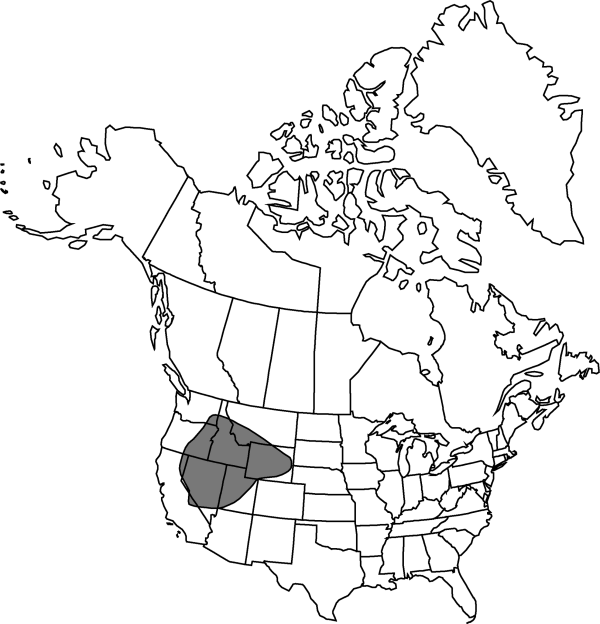Suaeda occidentalis
Proc. Amer. Acad. Arts. 9: 90. 1874.
Herbs, annual, erect, green to red, 0.5–3.5 dm, glaucous. Stems erect, green to red, usually branched from near base and throughout; branches ascending to widely spreading, slender. Leaves ascending or spreading; blade linear to linear-elliptic, widest at middle, adaxial surface flat, 5–30 × 0.5–15 mm, apex acute to apiculate. Glomes in flexuous-spreading, 1–6 cm compound spikes, 1–3-flowered; bracts subtending branches leaflike, not wider than leaves; bracts subtending flowers leaflike, widest at middle, shorter than leaves, 2–12 × 0.5–15 mm, not thin-margined basally. Flowers bisexual; perianth zygomorphic or irregular (1 or 3 segments usually larger), 1–3 mm diam.; perianth segments transversely winged proximally (continuously in disk or interrupted), rounded and keeled abaxially and/or horned or hooded distally; stigmas usually 2. Seeds dimorphic; lenticular, 1–1.5 mm diam., with seed-coat black, shiny; or flat, 1–1.5 mm diam., with seed-coat brown, dull.
Phenology: Flowering summer–fall.
Habitat: Saline or alkaline wetland soils, Great Basin desert
Elevation: 1000-2200 m
Distribution

Calif., Idaho, Mont., Nev., Oreg., Utah, Wash., Wyo.
Discussion
This species is easily confused with Suaeda calceoliformis, which occurs throughout its range. There are virtually no differences in floral characters. Bracts of S. occidentalis often appear thin-margined at the base in dried specimens but not in fresh material, whereas bracts of S. calceoliformis have visible membranous margins in both. Differences in bract and branching characteristics are usually distinct in fresh specimens. Larger specimens of S. occidentalis are usually branched throughout, with the spreading branches resulting in a more-or-less spherical shape of the plant. The mostly ascending branches of the more-erect S. calceoliformis tend to be concentrated in the upper half of the main stems, with primary branches sometimes arising from the base, and therefore creating a candelabrum shape of the plant.
Selected References
None.
Lower Taxa
"widest" is not a number."wider than long" is not a number.